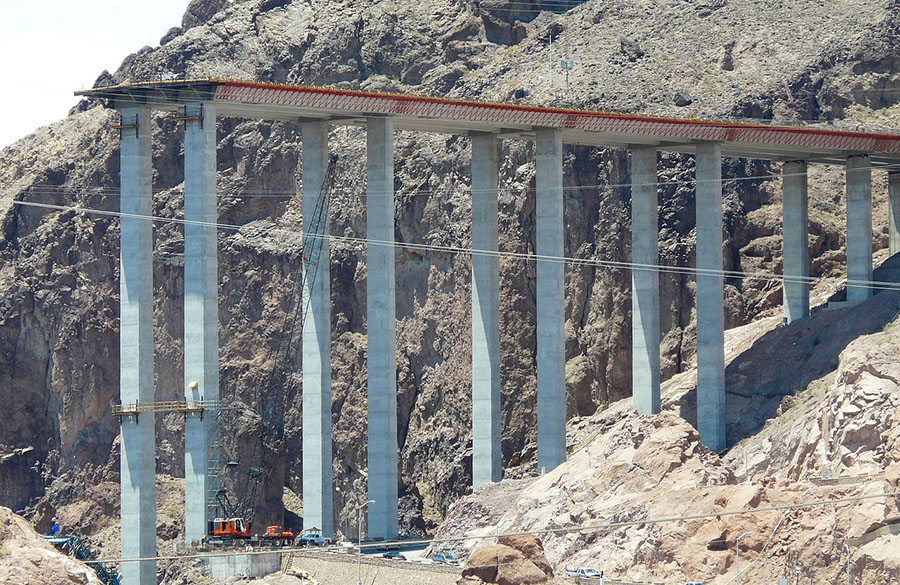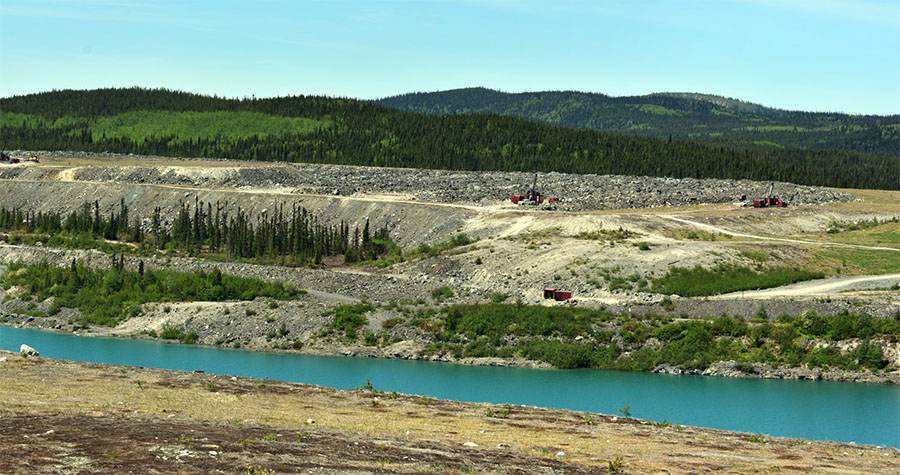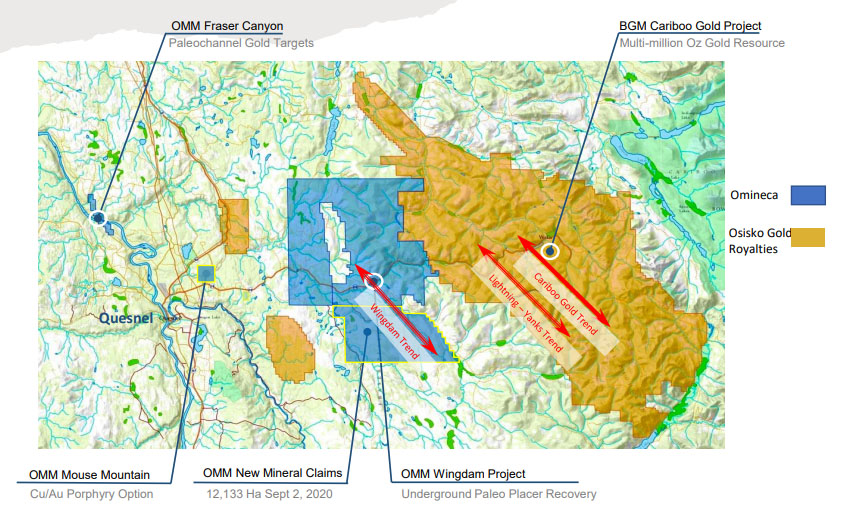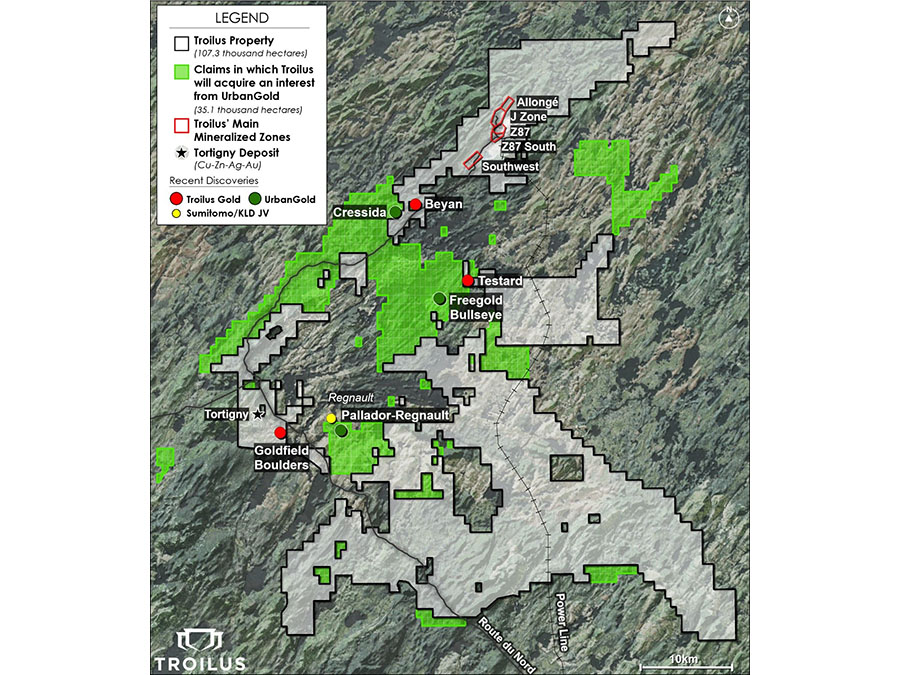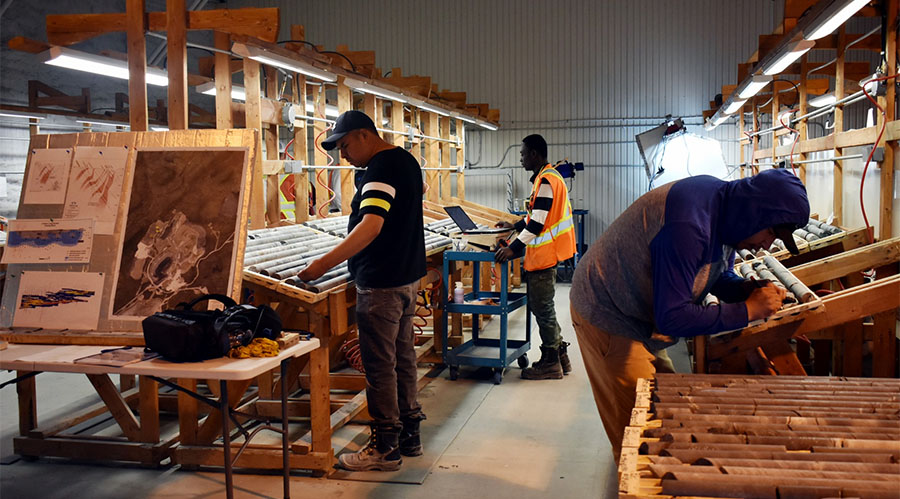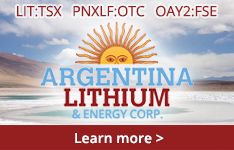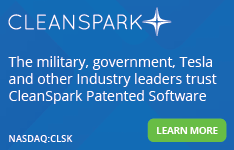Although "human infrastructure" has been a central truss for the White House's plans, Republicans aren't budging on their call for a central focus on roads, bridges, and other traditional construction projects. Democrats would probably be able to rally enough votes to override Republican opposition in the Senate, but they've yet to show willingness to do so, focusing more on bipartisan compromise.
Related ETFs: Global X U.S. Infrastructure Development ETF (PAVE), iShares U.S. Infrastructure ETF (IFRA), Industrial Select Sector SPDR Fund (XLI), Invesco DB Base Metals Fund (DBB)
Last month, President Biden introduced the various components of his $2.3 trillion plan to overhaul and upgrade the nation's infrastructure.
To receive all of MRP's insights in your inbox Monday–Friday, follow this link for a free 30-day trial. This content was delivered to McAlinden Research Partners clients on May 12.
Though the prospect of a large infrastructure has been broadly popular among the American people for many years now, plans seem to always run into congressional roadblocks. This time is no different.
Playing Politics
As Vox notes, Republican Senators John Barrasso (R-WY), Bill Cassidy (R-LA) and Susan Collins (R-ME) all emphasized that they'd support a bipartisan deal, but only if its focus is the roads and bridges that make up a typical surface transportation reauthorization bill. Barrasso said Republicans' counteroffer worth $568 billion could be a reasonable starting point for negotiations.
In recent days, Senate Minority Leader Mitch McConnell has softened the Republicans' stance, suggesting the price tag of an infrastructure package he is willing to accept may go as high as $800 billion. He did reiterate, however, that "traditional" infrastructure—projects like roads, bridges, ports and broadband—must be the recipients of funding.
Some more progressive elements of congress, particularly Senator Bernie Sanders (I-VT), think Democrats would do best to circumvent the need for any meaningful amount of Republican support. Unlike most other bills, budget measures can pass the U.S. Senate with a simple majority of just 51 votes, as opposed to the traditional 60, to become law.
The chamber is currently split 50-48 among Republicans and Democrats, respectively, plus two Independents (including Sanders and Maine's Independent Angus King) that would certainly side with the Democrats. In a vote that split solidly along party lines at 50-50, Vice President Kamala Harris would exercise her role as the president of the Senate to tip the balance toward Democratic proposals.
While the Biden Administration wants to make this bill as bipartisan as possible, Sanders argues that many Republican members of congress only want to hold up the process, despite the majority of the American people supporting new spending initiatives. As he told Axios in a recent interview, "The bottom line is the American people want results…. And frankly, when people got a, you know, $1,400 check or $5,600 check for their family, they didn't say, 'Oh, I can't cash this check because it was done without any Republican votes.'"
But if we look at what has been prioritized thus far, it appears more likely that most Democrats will be fine with a piecemeal approach and meeting their Republican counterparts somewhere in the middle.
The Drinking Water and Wastewater Infrastructure Act of 2021, which was overwhelmingly approved in an 89-2 Senate vote, may provide some insight into the current trajectory of negotiations. The bill authorizes about $35 billion over five years to improve leaky pipes and upgrade facilities, but it is far short of the $111 billion Biden hoped for over eight years.
Human Infrastructure and the 21st Century Economy
Right off the bat, White House officials have worked to highlight the proposal's combination of spending and tax credits that would translate into 20,000 miles of rebuilt roads, repairs to the 10 most economically important bridges in the country, and the elimination of lead pipes from the nation's water supplies.
But what makes this infrastructure bill different from its predecessors is the $1.8 trillion earmarked for "human infrastructure"—funding for domestic priorities like two years of free community college, universal access to preschool and a comprehensive paid family and medical leave program, As Senate Majority Leader Chuck Schumer stated on the Senate floor late last month, "Childcare is a necessity in the 21st century… As technology and automation replace jobs in certain sectors of the economy, workforce training is a must… This is not an either/or. Human infrastructure, or brick and mortar structure, we must say yes to both."
Focusing on the idea of a 21st century infrastructure bill has also spurred proposed spending initiatives on more modern physical projects like EV charging stations and renewable energy.
For instance, President Biden proposed spending $174 billion to promote EVs and install 500,000 charging stations across the U.S. as part of a sweeping infrastructure announcement, a plan MRP highlighted months prior to this official announcement. Bloomberg writes that the charging infrastructure would cover 57% of the charging that U.S. vehicles will need by 2030 and could spark the sale of some 25 million electric cars and trucks.
Per PV magazine, solar made it into the proposal as well, in the form of a proposed 10-year extension and phase down of an expanded direct-pay investment tax credit and production tax credit for clean energy generation and storage.
Along with this, the Biden plan would create an investment tax credit to incentivize the buildout of at least 20 GW of high-voltage-capacity transmission power lines, mobilizing tens of billions of dollars in private capital. The White House also lists spending on high-speed broadband alongside essential utilities. Biden noted that his plan would allocate $100 billion to "future proof" U.S. broadband networks. As LightReading.com reports, the Treasury and Commerce Departments further elaborated that "broadband" networks in the U.S. should provide at least 100Mbit/s download speeds and 20Mbit/s upload speeds.
One thing noticeably missing from the plan, though, was a significant amount of spending to secure new digital and electronic infrastructure. As Politico notes, nowhere does the White House's plan mention the need to protect new and upgraded cybersecurity infrastructure from hackers or propose any funding for this task.
That topic was recently foisted to the forefront when Colonial Pipeline announced that its IT systems were "the victim of a cybersecurity attack" last weekend, forcing the shutdown of 5,500 miles of pipeline that carry nearly half of all fuel supplies on the East Coast. That attack came in the wake of a previous breach of U.S. federal government servers, via IT firm SolarWinds. As MRP previously noted, state-backed hackers (likely of Russian origin) were able to insert malicious code into an update of Orion, one of SolarWinds' platforms. It initially became clear that the Departments of Commerce, the Treasury, and State—which used SolarWinds' IT infrastructure—were breached at some level, but that was only the beginning. In all, nine federal agencies and 100 private companies have been confirmed compromised thus far.
Even the water sector faces vulnerabilities, exemplified by an unknown hacker breaching a water treatment plant in Oldsmar, Florida back in February and attempting to poison the city's water supply by increasing the amount of lye in the system.
In recent days, the Biden administration has doubled back to re-energize an executive order on cybersecurity that has yet to be debuted. Per the New York Times, the order would create a series of digital safety standards for federal agencies and contractors that develop software for the federal government, such as multifactor authentication.
Commodities Already Constrained, Futures Rising
Even if we focus on the plan's more popular initiatives in rebuilding traditional infrastructure, it is becoming an increasingly expensive proposal when you consider surging commodities costs.
As CNN reports, the price of copper hit an all-time high on Monday, while soaring iron ore futures have pushed steel prices to triple their 20-year average. The Bloomberg Commodity Spot Index, which is at its highest level in a decade, had risen in 14 of the past 15 trading sessions through the end of last week.
A significant portion of inventory-stripping demand is coming from China, as the country has emphasized manufacturing and infrastructure as part of its own economic recovery.
China's producer price index rose 6.8% from a year earlier, its fastest pace since October 2017, following a 4.4% gain in March, the National Bureau of Statistics said Tuesday. As MRP noted earlier this month, Chinese industrial profits climbed 92.3% in March from a year ago, the National Bureau of Statistics said last month, down from the dramatic increase of 179% in the first two months of the year, but still outpacing the 20.1% gain in December. Industrial production increased 14.1% MoM.
Already, Goldman Sachs is projecting a coming supply crunch in copper markets that could boost the price of the red metal by more than 65% in four years. By 2025, global demand for copper is expected to soar to nearly $15,000 per tonne, up from current prices of around $9,000 per tonne, per the bank's estimates. Funding for the aforementioned charging stations that the Biden administration wants could be a major player in that expected shortage as electric vehicles take around 83 kilograms of copper on average and charging points need 10 kilograms of copper per unit.
A team of Jeffries analysts, led by Christopher LaFemina, expects copper demand in EVs will rise to 1.7 megatons in 2030 from 170 kilotons in 2020. Additionally, a shift from coal and gas power to wind and solar works in copper's favor because those systems require five times more copper than conventional ones.
MRP recently re-affirmed our LONG Copper and Copper Miners theme.
For Investors
Going forward, some level of infrastructure spending appears to be inevitable—particularly for more traditional infrastructure projects that are focused on the physical realm. Investors can play the coming spending drive via the Global X U.S. Infrastructure Development ETF (PAVE), as well as the iShares U.S. Infrastructure ETF (IFRA).
However, it is worth noting that a significant amount of those funds are allocated to utilities. The Industrial Select Sector SPDR Fund (XLI) would provide a more construction-oriented approach.
Finally, the rapid rise of metals futures can be captured in the Invesco DB Base Metals Fund (DBB).
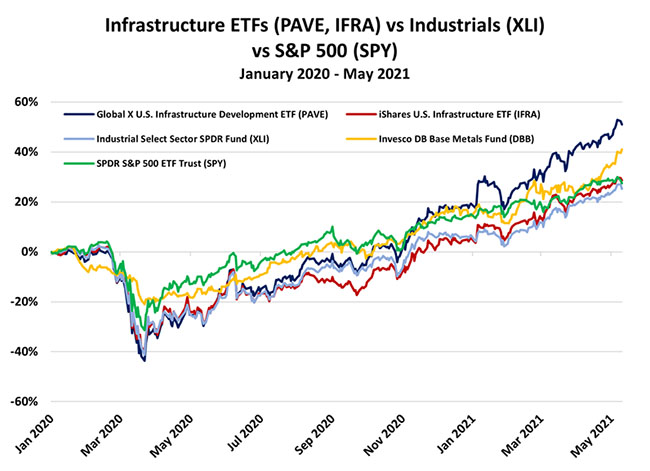
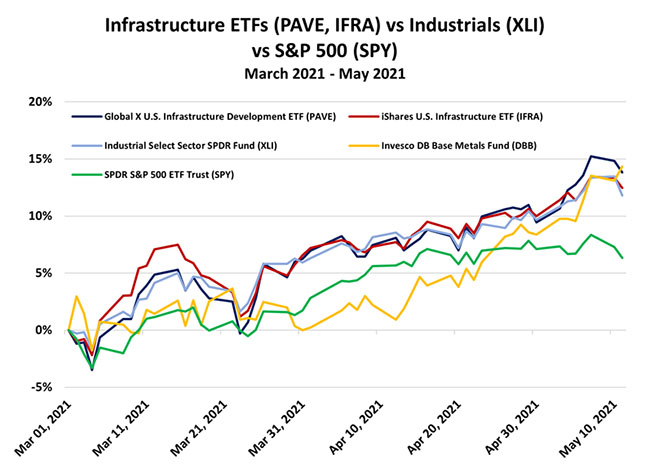
Originally published May 12, 2021.
 McAlinden Research Partners (MRP) provides independent investment strategy research to investors worldwide. The firm's mission is to identify alpha-generating investment themes early in their unfolding and bring them to its clients' attention. MRP's research process reflects founder Joe McAlinden's 50 years of experience on Wall Street. The methodologies he developed as chief investment officer of Morgan Stanley Investment Management, where he oversaw more than $400 billion in assets, provide the foundation for the strategy research MRP now brings to hedge funds, pension funds, sovereign wealth funds and other asset managers around the globe.
McAlinden Research Partners (MRP) provides independent investment strategy research to investors worldwide. The firm's mission is to identify alpha-generating investment themes early in their unfolding and bring them to its clients' attention. MRP's research process reflects founder Joe McAlinden's 50 years of experience on Wall Street. The methodologies he developed as chief investment officer of Morgan Stanley Investment Management, where he oversaw more than $400 billion in assets, provide the foundation for the strategy research MRP now brings to hedge funds, pension funds, sovereign wealth funds and other asset managers around the globe.
|
|
Sign Up |
Disclosure:
1) McAlinden Research Partners disclosures are below.
2) The following companies mentioned in this article are billboard sponsors of Streetwise Reports: None. Click here for important disclosures about sponsor fees. The information provided above is for informational purposes only and is not a recommendation to buy or sell any security.
3) Statements and opinions expressed are the opinions of the author and not of Streetwise Reports or its officers. The author is wholly responsible for the validity of the statements. The author was not paid by Streetwise Reports for this article. Streetwise Reports was not paid by the author to publish or syndicate this article. Streetwise Reports requires contributing authors to disclose any shareholdings in, or economic relationships with, companies that they write about. Streetwise Reports relies upon the authors to accurately provide this information and Streetwise Reports has no means of verifying its accuracy.
4) This article does not constitute investment advice. Each reader is encouraged to consult with his or her individual financial professional and any action a reader takes as a result of information presented here is his or her own responsibility. By opening this page, each reader accepts and agrees to Streetwise Reports' terms of use and full legal disclaimer. This article is not a solicitation for investment. Streetwise Reports does not render general or specific investment advice and the information on Streetwise Reports should not be considered a recommendation to buy or sell any security. Streetwise Reports does not endorse or recommend the business, products, services or securities of any company mentioned on Streetwise Reports.
5) From time to time, Streetwise Reports LLC and its directors, officers, employees or members of their families, as well as persons interviewed for articles and interviews on the site, may have a long or short position in securities mentioned. Directors, officers, employees or members of their immediate families are prohibited from making purchases and/or sales of those securities in the open market or otherwise from the time of the decision to publish an article until three business days after the publication of the article. The foregoing prohibition does not apply to articles that in substance only restate previously published company releases.
McAlinden Research Partners:
This report has been prepared solely for informational purposes and is not an offer to buy/sell/endorse or a solicitation of an offer to buy/sell/endorse Interests or any other security or instrument or to participate in any trading or investment strategy. No representation or warranty (express or implied) is made or can be given with respect to the sequence, accuracy, completeness, or timeliness of the information in this Report. Unless otherwise noted, all information is sourced from public data.
McAlinden Research Partners is a division of Catalpa Capital Advisors, LLC (CCA), a Registered Investment Advisor. References to specific securities, asset classes and financial markets discussed herein are for illustrative purposes only and should not be interpreted as recommendations to purchase or sell such securities. CCA, MRP, employees and direct affiliates of the firm may or may not own any of the securities mentioned in the report at the time of publication.
Charts and graphs provided by McAlinden Research Partners.


